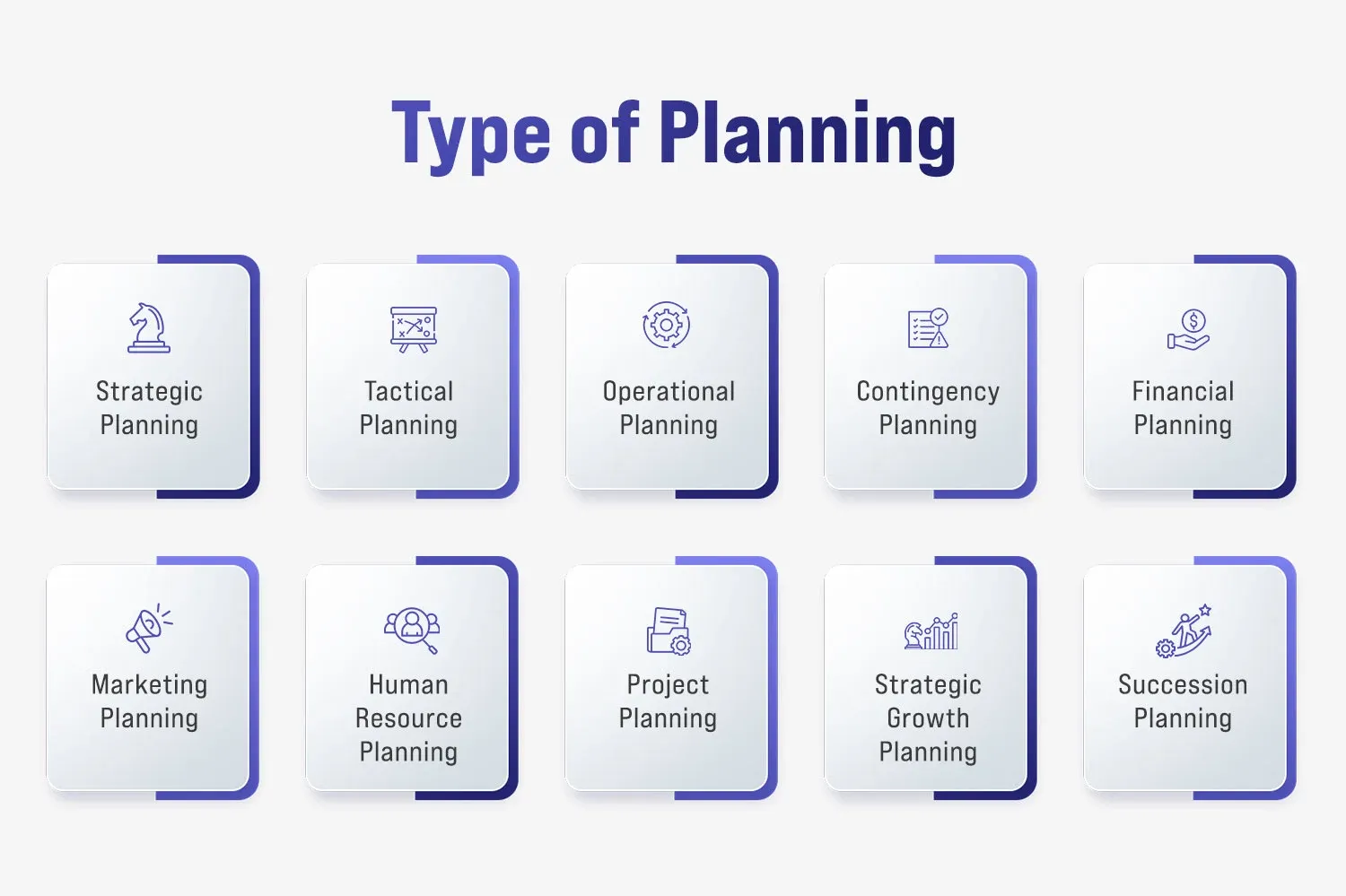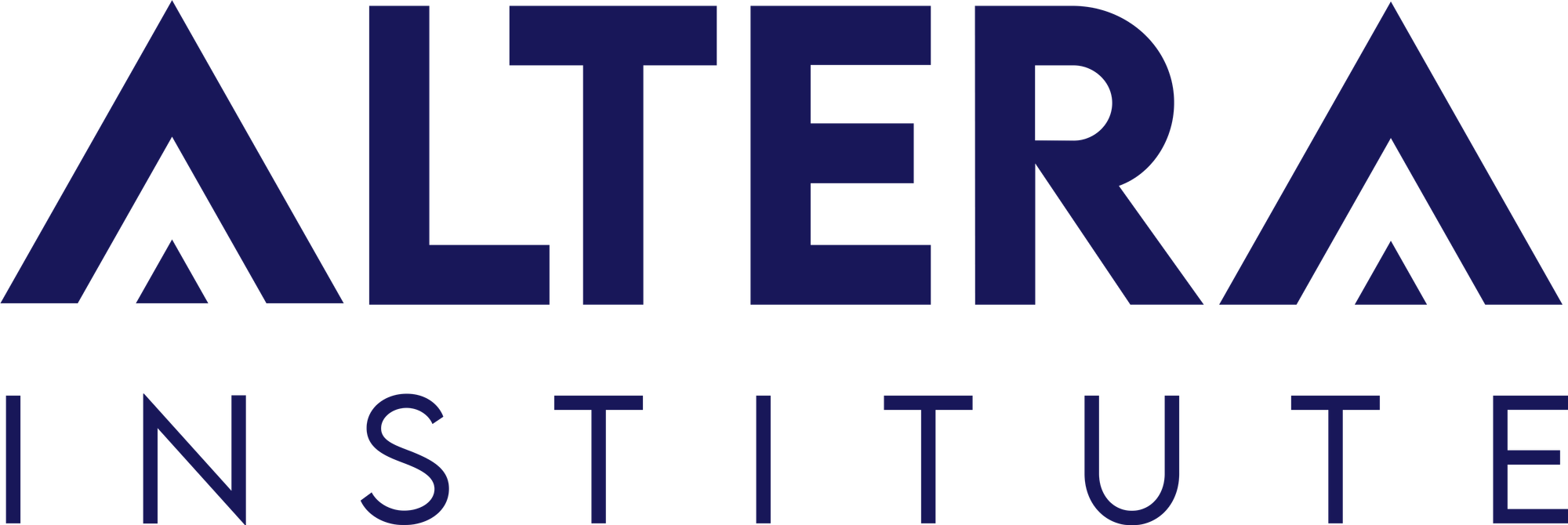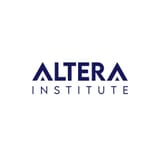What are the 7 Types of Planning?

Successful management is based on planning. It helps organizations map a path, deploy resources, adjust to change, and keep their objectives clearly in focus. Various kinds of planning are useful in different ways, depending on the nature of the vision being set or the crisis management that may occur at any moment.
In this article, we explore the 7 most relevant planning types commonly emphasized in management and highlight 3 additional essential planning types that play a critical role in ensuring organizational effectiveness and long-term success.
Learning about different types of planning is a great start—but applying them in real-world scenarios takes guidance and creates the right learning environment. Our Post Graduate Program (PGP) at Altera is built to help you understand and use concepts like these in actual projects and career paths.
Below, each section explains the planning type, provides real-world examples, outlines the benefits, and connects the concept to its importance in a successful organizational framework.
Type of Planning
Below, each section explains what the planning type is, gives real-world examples, outlines the benefits, and connects the concept back to its importance in a successful organizational framework.

Strategic Planning
Strategic planning is the most comprehensive form of planning, where an organization traces its long-term path and goals, typically spanning three to five years or longer. It is a way of examining the internal capabilities and external market environment, identifying the organization's vision and mission, and devising strategies to sustain a competitive advantage.
Scenario: A multinational technology firm provides a five-year strategic plan to become a global leader in artificial intelligence through R&D, acquisitions, and recruitment of the best talent worldwide.
Benefits:
- Gives long-term guidance and clarity.
- Aligns organizational operations with the vision and mission.
- Helps make decisions in advance and be ready for the future.
- Prepares the groundwork for any other form of planning.
Tactical Planning
Tactical planning translates strategic goals into action plans for departments or units within an organization. It is focused on the medium-term perspective, which usually spans months to a couple of years, and tactical plans provide detailed information, such as specific objectives, resource allocation, and measurable outcomes.
Scenario: The Sales department of a company creates a tactical plan within one year to gain 20% more customers by leveraging loyalty programs, improving CRM systems, and providing staff training.
Benefits:
- Turns strategy into operational goals.
- Enhances departmental concentration and responsibility.
- Enhance cross-functional coordination.
- Assists in tracking short-term results.

Operational Planning
Operation planning concerns day-to-day work. It is brief yet detailed and may include activities that span weeks, days, or months. Such plans include schedules of activities, procedural operational patterns, and mechanisms to increase workflow efficiency.
Scenario: A logistics company is working out a daily operation management plan, according to which the delivery trucks will be sent to work, and the drivers will be scheduled; however, the routes will be optimized to use less fuel.
Benefits:
- Ensures smooth daily operations.
- Enhances productivity and quality control.
- Provides a clear framework for staff.
- Minimizes bottlenecks and miscommunication.
Contingency Planning
Crisis preparedness plans, or emergency preparedness plans, place an organization into a readiness state in the event of an emergency or abrupt disturbance. It is also the task of identifying potential threats and their effects and establishing reserve actions to ensure that the inconveniences are minimized and business proceeds.
Scenario: A hospital prepares an emergency response plan in case of a pandemic outbreak, including resource stockpiling, staff rotation, and emergency communication guidelines.
Benefits:
- Cuts down the response time during emergencies.
- Reduces operational and reputational losses.
- Strengthens business continuity and resiliency.
- Increases stakeholders and social trust.
Financial Planning
Financial planning is a management style designed to ensure that an organization's funds are allocated towards achieving both short-term and long-term financial objectives. It consists of budget, forecast, cash flow, investment, and risk analysis. It assists every department; in other words, it grants adequate funding.
Scenario: A startup develops a three-year financial plan to secure venture capital, achieve a burn rate, and achieve profitability in the third year.
Benefits:
- Enhances financial stability and sustainability.
- Informs decision-making on investments and expenditure.
- Helps deal with risks and even plan depressions.
- Align expenditures with strategic priorities.
Marketing Planning
Marketing planning is based on customer reach and maintenance. It explains the marketing objectives, target populations, campaigns, media, messages, and budgets. An effective marketing strategy is one that supports brand positioning and business development.
Scenario: As an eCommerce company, a new product line is created, and the six-month promotional strategy includes influencer marketing, PPC advertising, email marketing, and content development.
Benefits:
- Improves brand awareness and customer engagement.
- Brings marketing and sales in line with each other.
- Allows better ROI tracking for campaigns.
- Assist in adjusting to the market trends and consumer demands.
Human Resource Planning
Human Resource (HR) planning ensures that the organization has the talent to meet current and future needs. It entails integrating workforce requirements, talent management, training, succession management, and human capital into business strategies.
Scenario: A healthcare system creates an HR plan to recruit 200 nurses in the year, based on estimated patient growth and service expansion.
Benefits:
- Guarantees that talent is available to strategic positions.
- Employee development and retention.
- Provides self-proactive filling of skills gaps.
- Builds leadership pipelines.
Project Planning
Project planning offers scope, objectives, timelines, and resources, which are necessary to realize a successful execution of a project. It entails setting milestones, task allocation, risk assessment, and communication plans. Effective planning of a project meets the deadline and budget.
Scenario: An architecture firm is working on the development of the comprehensive project management plan of the six-month building refurbishment that includes plans to buy new materials, plans to contract a labor service, and compliance audits.
Benefits:
- Improves project efficiency and oversight.
- Reduces cost overruns and delays.
- Increases team collaboration and accountability.
- Enhances stakeholder satisfaction.
Strategic Growth Planning
Strategic growth planning is a division of strategic planning that focuses on business growth. It may involve market penetration, product development, geographical expansion, partnerships, mergers, or acquisitions.
Scenario: A SaaS firm plans to expand into Asian markets through localization of products, creation of local alliances and ensuring more customer support in local languages.
Benefits:
- Drives business expansion and competitiveness.
- Encourages innovation and scaling opportunities.
- Identifies and mitigates growth-related risks.
- Attracts investors and strategic partners.
Succession Planning
Succession planning enables an organization to prepare leadership changes by identifying, mentoring, and nurturing future leaders. It ensures the continuity of critical jobs, particularly executive or mission-critical jobs.
Scenario: An organization has already realized that it has highly talented middle-level managers and has already put up a leadership development program that shapes future managers in three years.
Benefits:
- Reduces disruption during leadership changes.
- Retains top talent through development paths.
- Protects institutional knowledge.
- Ensures long-term organizational stability.
FAQ
Q1. What are the 7 Ss of planning?
Ans: The 7 Ss of planning refer to the McKinsey 7-S Framework, a model of strategic management that aligns all components of an organization to achieve successful planning and performance. The seven elements are:
- Strategy: This is the general roadmap of the company to achieve its vision and secure leading market positions, determining the path to future success and the means to achieve it.
- Structure: This describes the organizational structure, including lines of authority, departmentalization, and reporting relationships, to clarify who is responsible for what and at what stage of the company.
- Systems: These comprise the set of procedures, daily operations, and working mechanisms that are involved in the day-to-day operation of a business. These systems ensure consistency, efficiency, and smooth operation across different departments.
- Shared Values: These common beliefs and cultural morals, as well as organizational philosophies, influence the overall behavior and strategic decisions within the company. They play a crucial role in shaping the company's identity and overall culture.
- Skills: The abilities, expertise, and competencies possessed by employees and leaders. These factors determine the organization’s ability to implement its strategy effectively and adapt in response to changing conditions.
- Style: The existing leadership culture and management shape the workplace environment. It demonstrates how leaders and staff interact and how their style impacts morale, productivity, and workplace culture.
- Staff: It refers to the labor force within an organization, including its size, strengths, motivation, and development. It also addresses the recruitment, training, and retention of employees to support organizational objectives.
This model can be used by organizations to evaluate alignment, strategic planning, and change management, particularly in the context of growth, restructuring, or mergers.
Summing Up
Any successful organization is built upon the planning phase. The notions of vision-setting for long-term strategic planning, as well as the details of daily functioning and crisis management, are all essential to efficient movement, development, and empowerment.
Regardless of whether it involves a tall match with human resource planning, sustainability in financial planning, or succession planning, businesses that plan are better positioned to adapt, innovate, and thrive in an increasingly complex environment.
Knowing and utilizing these ten types of planning will help leaders make effective decisions, maximize the use of available resources, and bring their teams to shared objectives. With increasingly complex markets and competitive pressures, structured and strategic planning is no longer a best practice but a strategic necessity.





